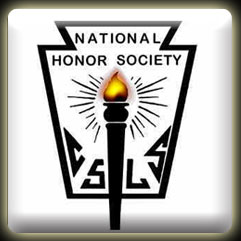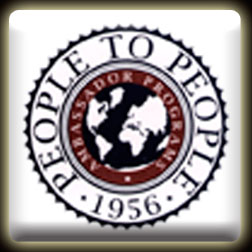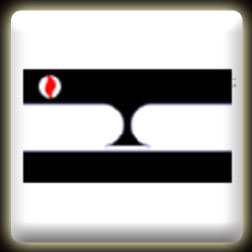The Life of Thomas Moore Essay
The Life of Thomas More - by Peter Ackroyd
The Life of Thomas More by Peter Ackroyd is a biography detailing the life of Sir Thomas More, the famous humanist and martyr of the Anglican Reformation. This biography focuses mainly on the inter-personal relationships and family ties within the socio-political networks that More was so easily able to ascend through. Although this seems to be a narrow subject to focus a biography, Ackroyd is able to accomplish this goal from the beginning to the end. From this idea, the book can be split into a few neat sections based on More’s relationships with his fellows, and each has its own particular way of describing More’s interactions.
The first section can be considered “the early years”, and consists of chapters 1 through 7. These chapters begin with More’s birth, and continue on to his first interactions with Erasmus, at about 18 years. Some of the main focuses of these chapters are the description of John More (his father), the description of John More’s connections and social ties, and of Thomas More’s own brilliance. In this section Thomas More is described as “quick learning” (21) and “practical” (24). Within the expanses of the English social and political spheres, John More was well connected, which is less than surprising, due to the fact that John More was one of the most well respected lawyers in all of England. This allowed young Thomas More to connect with the right people and receive the best treatment, page positions, and later schools and universities.
Section two is from chapter 8 to chapter 14, and is mostly concerned with More’s relationships with his fellow humanists, Erasmus, Colet, Lily, Grocyn and Linacre. Colet, Grocyn, Lily and Linacre are all described as More’s “Tutors and mentors” (76), while Erasmus is ever referred to as More’s “Friend” (87). Ackroyd also mentions quite a few other humanists and scholars that were connected with More, but has little or no useable descriptions of them. One of the overriding themes of this section is the expanse and intricacy of 15th century politics. During this section the quick political ascension of More is overtly prominent. In chapter 8, More is still a scholar, fresh out of Oxford, while in chapter 14, he is an “Outer Barrister,”(137) the highest level of lawyer before graduation from the levels of schooling. This is the point where More begins to come into contact with the higher nobility, especially the king.
More’s relationship with King Henry VII is the main subject of chapters 15 through 19. This is one of the more specific and detailed sections of the book. In chapter 15, More writes a condemning letter against Henry VII’s new tax structure. Not only that, but he supported his arguments even when confronted by Henry VII. This one act was enough to have More sent into a pseudo-exile where he could not participate in public service. Upon the king’s death in chapter 18, More becomes active once again, and begins to write his first main book, The History of Richard III.
In chapter 20, Ackroyd introduces Martin Luther. Luther is portrayed in this book as the antithesis of More. Luther is lewd, More is pious. Luther is radical, More is conservative. Luther is modern, More is medieval. All of those are comparisons made in these chapters. However, Ackroyd does point out some surprising similarities. Both More and Luther left their respective monasteries, both had fathers who were lawyers (although More followed his father and Luther did not), and both More and Luther had left their monasteries in order to marry. Both theologians saw each other as antagonists towards their respective movements.
It is at this point that More begins to see problems with Henry VIII’s decisions. Chapter 25 introduces Anne Bolyn, and it is made clear that More was much more of the opinion that Catherine of Aragon was the proper queen of England. This is the beginning of not only the Anglican Church, but also of More’s dissension. Anne Bolyn wasn’t enough for More to abandon his master, Henry VIII, but Henry’s other four wives were. During this period, More was still able to maintain connections in France, the Netherlands, Spain, and Italy, and kept them all informed about his opinions on Henry’s actions. His final act of “treason” was his refusal to sign the Act of Succession.
The final five chapters go into much greater detail about More’s correspondences, especially those while he was imprisoned. Quotations from More’s discourses with Sir Richard Rich, Master Palmer, Sir Richard Southwell, his daughter Alice, and many others are displayed in great detail. Ackroyd also goes into great detail about the politics and happenings in the rest of Europe at the time that influenced Henry VIII’s decision. For example, Henry VIII was “furious” about the appointment of John Fisher, a recently charged heretic and traitor, to a position as a cardinal. This and many other factors then led to the execution of Sir Thomas More on July 6th, 1935.
The work of Ackroyd is certainly a compelling one, and as a whole, The Life of Thomas More is reliable. This can be said for many reasons, including the extent of the research done, comprehensiveness of description, and extensiveness of quotations. Ackroyd’s credentials also lend an air of authenticity towards the biography.
Peter Ackroyd is a well acclaimed English writer of biographical text, who focuses mainly on historical English authors. Some of his other most famous works include biographies of T. S. Eliot, Dickens, Ezra Pound, Chaucer, Shakespeare, and Blake. Ackroyd is also a prolific author of historical works dealing with the rest of European Culture as well. He has written books on Venice, Ancient Greece, Ancient Rome, Ancient Egypt, London, and even a “biography” of the Thames. In addition to his extensive writing resumé, he has won the Heinemann Award, the Whitebread Biography Award, the James Tait Black Memorial Prize for Biography (for The Life of Thomas More), and the South Bank Show Annual Award for Literature. Based on these credentials, Ackroyd seems to be a highly respectable biographer and has enough ethos to be trusted.
However, The Life of Thomas More would be considered reliable even without the extensive credentials of its author. The bibliography may be enough just by itself. With twenty-seven pages and more than two hundred sources, this book cannot be said to be under researched. It might also be noted that at least 22 of those are primary sources, written by Thomas More himself. Another cementing factor of reliability is Ackroyd’s extensive use of quotations and direct translations. Every page of this book includes at least two quotes or references, and many quotes are not even taken out of the middle english spelling. This last fact, while good for reliability, may have condemned this book in its usability.
The utility of The Life of Thomas More is incredibly precise. The main defining feature of this book is detail and precision, but sometimes that can work against a book. The extensive quotation and allusion only adds to this fact. The Life of Thomas More is a book that would be most useful for scholarly work when applied to a class dealing with the Protestant reformation, 15th Century politics, or 15th Century Literature. In any of these subjects, this book excels beyond the expected, and is extremely useable. However, the technicality and extensive detail prevent this book from being utile in most other circumstances.
Peter Ackroyd’s The Life of Thomas More is an extremely in-depth biography of Sir Thomas More. It is an excellent descriptor of 15th Century life, politics, and religious ideals. This book would be ideal for any class dealing directly with Thomas More, or the 15th Century lifestyle, but it is too detailed and technical for any other purpose.



